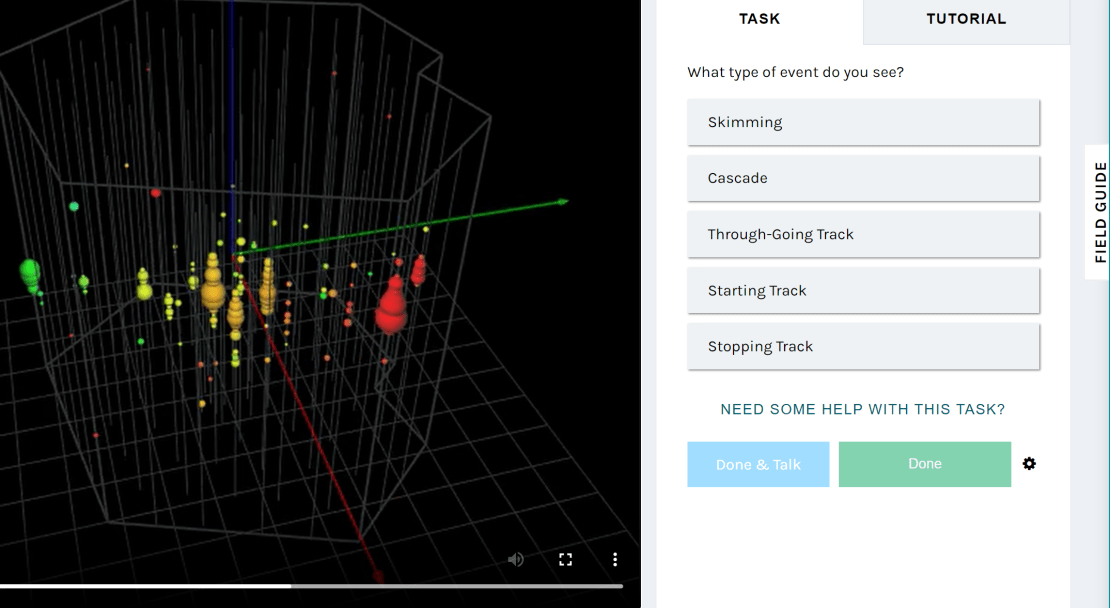Every second, about 100 trillion neutrinos pass through your body unnoticed. At the South Pole, the IceCube Neutrino Observatory detects these elusive particles and works to identify their astronomical origins to help unlock mysteries of the universe. Such an undertaking requires a massive amount of data, with one terabyte of data recorded daily by IceCube. But organizing the data can be labor intensive. This is where the public can help.
Starting today, volunteers from anywhere can participate in the Name that Neutrino project led by IceCube researchers at Drexel University, which asks users to categorize IceCube data. Through the Zooniverse platform, volunteers can join in from the convenience of their own computer or phone. Name that Neutrino is open to everyone and will run for about 10 weeks.
“We created this project so that people can get involved in our research and learn about our exciting work,” says Associate Teaching Professor of physics Christina Love of Drexel University. “We are really hopeful that this project can help us uncover a new way of looking at the sky: instead of the light from the stars, we are seeing the particles!”

When a neutrino interacts with a molecule in the ice, secondary charged particles emit light that creates a signal or light pattern that can be used to determine the neutrino’s energy and direction. Volunteers will first be given a brief tutorial of the different categories for the signals and what they might expect. Next, users will watch a short video and pick one category (out of five) matching that signal. By categorizing the data, volunteers are helping IceCube weed through the background signals to determine what type of particle caused that signal.
“We use AI and machine learning to try our best, but I’m excited to see if citizen scientists can help us even more,” says Naoko Kurahashi Neilson, an associate professor of physics at Drexel University.
The volunteer classifications will then be compared to machine learning predictions, which will improve the fidelity of the data and provide even better results.
“I believe that citizen science and AI can jointly contribute incredible things to research,” says Elizabeth Warrick, a physics masters student at Drexel University. “This project from IceCube is another opportunity to showcase how much we can learn about the universe from all perspectives.”
***
Want to get involved? Here’s how:
- Click on the link: https://www.zooniverse.org/projects/icecubeobservatory/name-that-neutrino
- Click “Get Started” to begin.
- Click “Tutorial” to learn about how to classify signals.
- Watch the brief video and pick one of the five categories for signals.
- Check out the “Field Guide” for more examples and information.